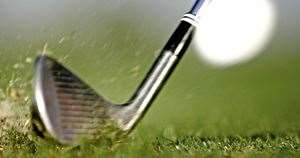Golf club acoustics are an increasingly technical aspect of club design. Designers from golf’s top brands tell us why … and reveal how they create that satisfying impact sound.
At TaylorMade, this software helps engineers come up with the rib configuration needed to control vibration from its R1 driver’s adjustability mechanisms. “Rib configuration is an involved process for our engineers,” says Beach.
“Fortunately we have an optimisation tool on the computer that will search hundreds of different rib configurations to find the one that will hit our target frequencies with the minimal weight.”
While impact sounds can be dialled in by computer, companies naturally test acoustics in the real world, after a club has gone into production. At Callaway, clubheads are placed in a small room called an anechoic chamber – a very sterile, echo-less environment – and struck with a mallet.
Meanwhile Ping use something called a Binaural Head. “We put a mannequin head at the exact height and distance from the ball but on the left side of the impact,” says Jertson. “We record impact from its perspective. The important thing here is that we measure the sound almost exactly as how the player hears it – not in a lab setting or environment.”
Face value
As for putters, as Marty Jertson has asserted, 90 percent of their feel is down to sound. Face inserts, then, are designed not so much for feel as for the sound they create, along with the roll-enhancing technologies of the design.
“In the past 10 years or so the ball has got firmer,” says Jertson. “So we have had to do things in the putter to make it seem the ball is not coming off the face too hot. Our Nome TR and Scottsdale TR models use an aluminium insert with True Roll grooves, which help make ball velocity consistent across the face. The grooves dissipate some of the energy, and they combine with the aluminium to create a desirable sound with the modern ball. That’s the big thing in putters; not too soft, not too hot, right in between.”
It’s a theme that comes up time and again with golf club acoustics. When it comes to defining that pleasing sound, no one can tell you what it is, but everyone can tell you what it isn’t.
“It’s hard to say what a great sound is,” says Callaway’s Gibbs. “We’ve captured the sound profiles of dozens of clubs and canvassed opinion on them, and we’ve found there is a threshold of acceptability. We may not be able to pin down one perfect sound, but we can certainly predict with accuracy what is too harsh, and what is too dead.”
But perhaps the most intriguing aspect of golf club acoustics is that companies devote so much time and energy to an aspect that has almost zero effect on the club’s performance. Sound doesn’t affect the club’s power, or its ability to apply spin, or even its forgiveness – other than via feedback on mis-strikes. It merely affects our perception of those things.
The reason they do, of course, is a simple one; if a club sounds bad, we won’t buy it. “We could come out with a driver that gave the golfer 20 extra yards,” Jertson concludes. “But if it sounded like it still had the headcover on, it would flop.”



.jpg&h=172&w=306&c=1&s=1)






.jpg&h=115&w=225&c=1&s=1)





